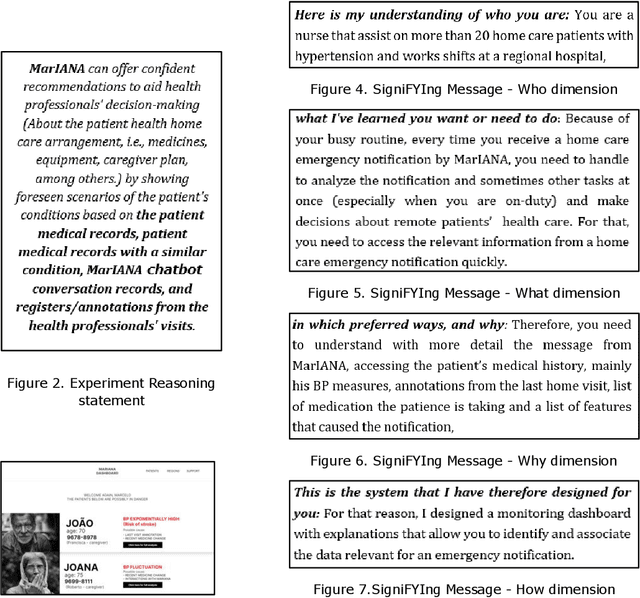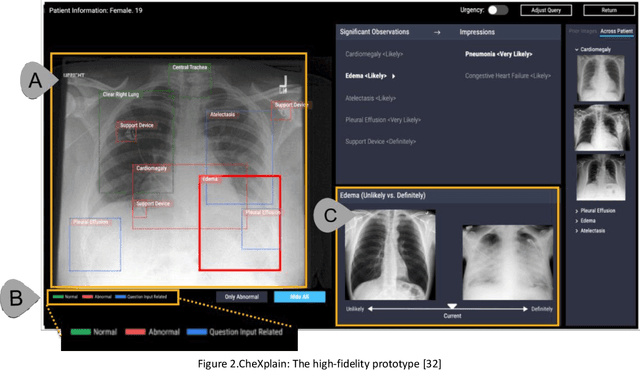Mateus Monteiro
Designer-User Communication for XAI: An epistemological approach to discuss XAI design
May 17, 2021
Abstract:Artificial Intelligence is becoming part of any technology we use nowadays. If the AI informs people's decisions, the explanation about AI's outcomes, results, and behavior becomes a necessary capability. However, the discussion of XAI features with various stakeholders is not a trivial task. Most of the available frameworks and methods for XAI focus on data scientists and ML developers as users. Our research is about XAI for end-users of AI systems. We argue that we need to discuss XAI early in the AI-system design process and with all stakeholders. In this work, we aimed at investigating how to operationalize the discussion about XAI scenarios and opportunities among designers and developers of AI and its end-users. We took the Signifying Message as our conceptual tool to structure and discuss XAI scenarios. We experiment with its use for the discussion of a healthcare AI-System.
The human-AI relationship in decision-making: AI explanation to support people on justifying their decisions
Feb 22, 2021

Abstract:The explanation dimension of Artificial Intelligence (AI) based system has been a hot topic for the past years. Different communities have raised concerns about the increasing presence of AI in people's everyday tasks and how it can affect people's lives. There is a lot of research addressing the interpretability and transparency concepts of explainable AI (XAI), which are usually related to algorithms and Machine Learning (ML) models. But in decision-making scenarios, people need more awareness of how AI works and its outcomes to build a relationship with that system. Decision-makers usually need to justify their decision to others in different domains. If that decision is somehow based on or influenced by an AI-system outcome, the explanation about how the AI reached that result is key to building trust between AI and humans in decision-making scenarios. In this position paper, we discuss the role of XAI in decision-making scenarios, our vision of Decision-Making with AI-system in the loop, and explore one case from the literature about how XAI can impact people justifying their decisions, considering the importance of building the human-AI relationship for those scenarios.
 Add to Chrome
Add to Chrome Add to Firefox
Add to Firefox Add to Edge
Add to Edge